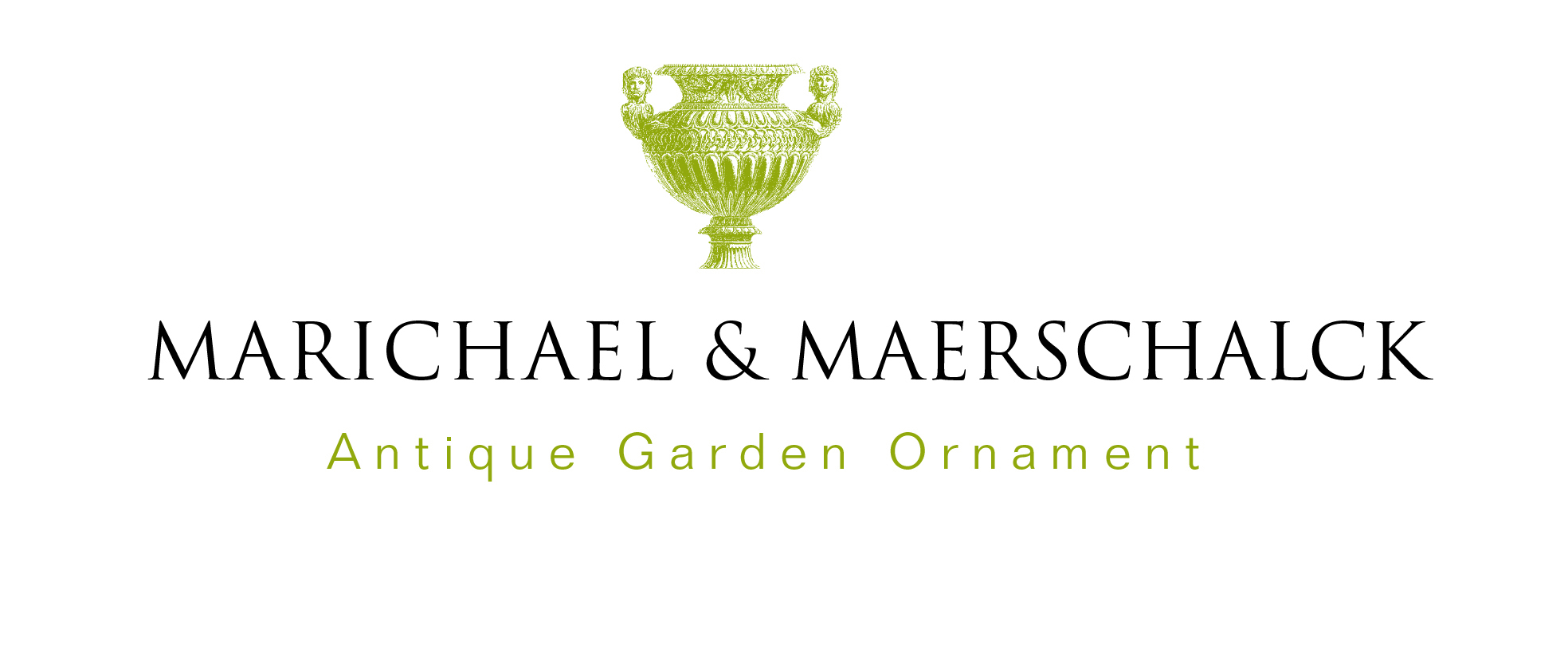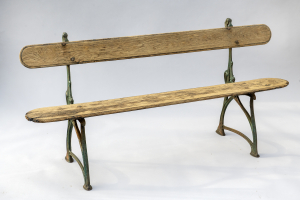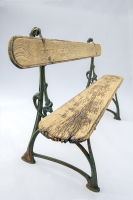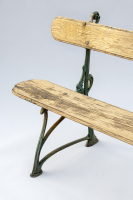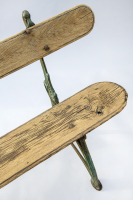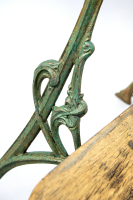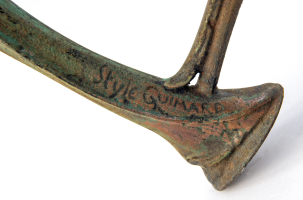- Home
- An Art Nouveau garden bench by Hector Guimard
An Art Nouveau garden bench by Hector Guimard
A cast iron art nouveau garden bench by Hector Guimard (1867-1942) executed by the Fonderies de Saint-Dizier-Leclerc & Cie, circa 1912.
The 2 legs are signed “Style Guimard”.
Guimard's first garden bench models appeared in 1908. This bench is the "GO" model and was produced from 1912 to the end of the 1930s, with sometimes minor differences in details.
In the 1920s the signature “Style Guimard” disappeared on these benches: so this is indeed an 'early' model. The woodwork is still original, with the special notches on the edges and designed by Guimard himself; also the bench has been stripped down to its original green color.
Dimensions: 179 cm W; 85 cm H
Condition: good condition considering age, sturdy and not shaky, the right frame is slightly angled inwards
Reference: VER092022
Hector Guimard (Lyon, March 10,1867 – New York, May 201942) was a French architect who is considered the most important representative of the Art Nouveau in France. He had his own role within Art Nouveau, but he gained no followers, left no school and was therefore considered a subordinate within the movement for a long time. The lack of followers contrasted with the great profusion of his architectural and decorative work. (Wikipedia)
Guimard looked to nature for inspiration, and combined materials such as stone and cast iron in unique ways to create designs composed of curves and waves that evoked movement. Guimard broke away from his classical Beaux-Arts training to advocate a modern, abstract style; he also pioneered the use of standardized models for his design objects and experimented with prefabricated designs in his social housing commissions, advancing the technology of the time.
At the end of the nineteenth century, Paris became acquainted with Guimard's Art Nouveau. He broke through classical building with a number of remarkable houses in the 16th arrondissement. He was a student of the Belgian Art Nouveau architect Victor Horta, but clearly had his own interpretation of Art Nouveau. Due to the success of his Guimard style, he was commissioned in 1900 to design the entrances for all metro stations in Paris. Most stations only had a decorated entrance, but he also designed a few complete stations. At the time, the work was not much appreciated by everyone and unfortunately several stations have since disappeared. Unfortunately, because the metro entrances are now highly appreciated and are recognized all over the world as the metro entrances of Paris.
‘Hector Guimard - Art Nouveau to Modernism’ by David A. Hanks; Yale University Press
Einzig Hector Guimard (1867-1942) hat erkannt, dass der Guss ja eigentlich das adäquate Verfahren ist, die fliessenden, schwingenden, floralen Formen des Jugendstils, in denen dieser sich vor allem in Frankreich und Belgien, durch Henry van de Velde (1863-1957) aber auch in Deutschland, verwirklicht hat, in ein dauerhaftes Material umzusetzen. Seit 1899 hat er die Gestaltung der Pariser Metro-Eingänge übernommen und mit seinen grün patinierten Gusseisengebilden das Stadtbild von Paris nachhaltig geprägt. Für die Fonderies Artistiques in Saint-Dizier hat er mehrere Gegenstände entworfen, darunter auch Bänke. Mit ihnen ist ein - allerdings völlig einsamer - letzter Höhepunkt in der Gestaltung und Fertigung gusseiserner Möbel am Ende des 19.Jahrhunderts erreicht.
Peter Nickl in Bänke in Park und Garten, pag. 122; Edition Minerva/ Handwerk, 1998.
Antieke Tuinornamenten
Viooltjesdreef 39031 Baarle-aan-de-Leie
info@antieke-tuinornamenten.be+32 (0) 9 282 20 97+32 (0) 475 53 41 63
Opening hours
Bezoek aan de tuin enkel na afspraak.
